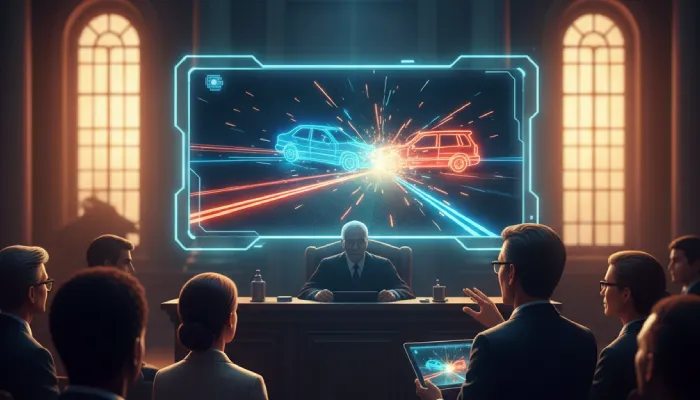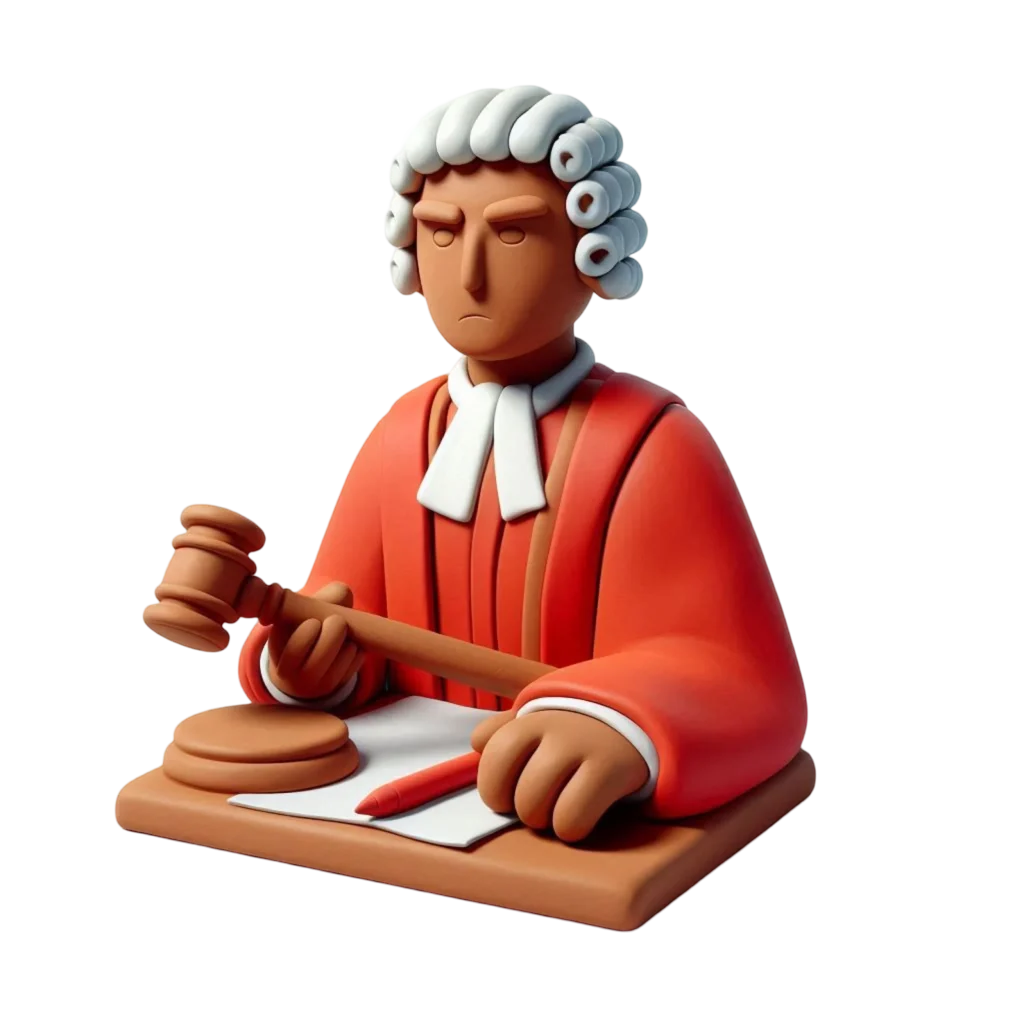What is Forensic Animation?
Forensic animation is the art and science of recreating real-life events such as accidents, crimes, or disputes through advanced computer-generated imagery. It’s designed to visually explain complex scenarios and provide clarity during legal proceedings. These 3D or 2D visual reconstructions help judges, juries, and attorneys understand the sequence of events in a clear, compelling way.
In simple terms, forensic animation is a specialized field within forensic science that combines technical expertise and visual storytelling to bring evidence to life. As officially defined, “Forensic animation is a branch of forensic science in which audio-visual reconstructions of incidents or accidents are created to aid investigators.”
While the concept of using forensic science in the courtroom has existed for decades dating back to the early 1900s in both Europe and the United States modern forensic animation represents the natural evolution of this practice. With today’s powerful computer graphics and simulation tools, what was once explained through words and static images can now be visualized dynamically and accurately.
What Does a Forensic Animator Do?
A forensic animator is a highly skilled professional who uses modern digital tools to reconstruct incidents, accidents, or crime scenes for use in legal cases. Their main goal is to transform complex data such as witness statements, measurements, or expert reports into realistic visual representations that can support an attorney’s case.
These animations can range from detailed vehicle accident reconstructions to complex criminal event recreations. They’re designed not just to inform but also to persuade helping attorneys clearly communicate facts to judges, juries, and opposing counsel.
In recent years, forensic animations have become shorter and more concise, typically lasting anywhere from 20 seconds to a few minutes. Despite their brevity, they carry immense power. A single well-crafted legal animation can often illustrate what hours of testimony might struggle to convey.
However, despite their growing popularity, forensic animations are still misunderstood by many. Some assume they are purely artistic interpretations, but in reality, these visuals are built on verified evidence, data, and expert analysis. When used correctly, legal animation becomes an indispensable tool bringing clarity, precision, and impact to the courtroom.
How Was the First Forensic Animation Video Created?
The origins of forensic animation date back to the late 1980s, marking a groundbreaking moment in courtroom visualization. One of the earliest known cases to use computer-generated animation was Connors v. United States, centered around the tragic crash of Delta Air Lines Flight 191. To help the jury and judge grasp the technical details and sequence of events, the plaintiff’s attorney presented a 45-minute computer-generated video. This innovative use of digital animation transformed complex flight data into a clear, visual narrative making it easier for everyone in the courtroom to understand what really happened. It was a pioneering moment that laid the foundation for today’s Legal Animation industry.
Why Forensic Animation Is Valuable for Your Client’s Case
This knowledge hub is designed to guide you through everything you need to know about the world of Legal Animation from how animations are created and what tools are used, to understanding how they can make a powerful impact in the courtroom. Whether you’re presenting accident reconstructions, crime scene visuals, or complex medical procedures, legal animations can turn intricate evidence into persuasive storytelling that resonates with juries and judges alike.
With clear visuals, expert accuracy, and compelling presentation, Legal Animation helps transform data into understanding and understanding into results.
What’s the First Step in Creating a Legal Animation?
The first step in creating a Legal Animation begins long before any visuals are rendered it starts with understanding the case itself. Before an animator even opens design software, they collaborate closely with attorneys, experts, and investigators to gather and analyze every piece of relevant evidence. This includes reviewing accident reports, photographs, blueprints, medical records, surveillance footage, and witness statements.
The goal at this stage is accuracy. Every frame of the final animation must reflect the verified facts of the case. This initial phase often involves meetings with forensic experts or engineers who can clarify technical details such as impact angles, timing sequences, or spatial relationships.
Once all critical data is collected, the animation team begins to develop a storyboard a visual blueprint that outlines the sequence of events to be recreated. This helps both the legal team and the animators confirm that the narrative flow aligns perfectly with the evidence and supports the case strategy.
By taking the time to deeply understand the facts and structure the story correctly from the start, the legal animation process ensures that the final product isn’t just visually impressive it’s factually accurate, courtroom-ready, and powerfully persuasive.
How Can a Trial Animation Win My Client’s Case?
A trial animation can be one of the most powerful storytelling tools in the courtroom. Instead of relying solely on verbal explanations or static exhibits, a well-crafted animation brings your client’s story to life showing exactly how an event unfolded. By visualizing complex evidence such as accident reconstructions, medical injuries, or mechanical failures, jurors gain a clearer understanding of the facts. This level of clarity builds credibility, strengthens your argument, and helps the jury remember your key points long after closing arguments. In many cases, a Legal Animation can bridge the gap between expert testimony and jury comprehension ultimately helping you win your client’s case.
Can Forensic Animation Convince a Jury?
Absolutely. Jurors are more likely to believe what they can see rather than what they only hear. Forensic animation transforms complex evidence into visually engaging and easy-to-follow sequences that align with witness statements and expert reports. This visual consistency reinforces the truth of your argument. When done correctly, the animation not only educates but also emotionally connects with the jury helping them visualize the impact of the event, understand timelines, and see cause-and-effect relationships that words alone may not convey. The result? A more informed, confident, and persuaded jury.
Is 3D Animation Helpful for My Personal Injury Plaintiff?
Yes 3D animation can make a tremendous difference in personal injury cases. When injuries, surgeries, or accidents are difficult to describe with medical charts or diagrams, 3D legal animation turns them into vivid, understandable visuals. It can show the exact mechanism of an injury, the sequence of a collision, or the internal impact on bones and tissue all in a way that the jury can instantly grasp. This not only enhances the emotional impact of your presentation but also helps your client’s suffering feel real and relatable. For plaintiffs, 3D animations can make invisible pain visible and strengthen their pursuit of justice.
What About My Defendant? Can They Use Legal Animation?
Definitely. Legal animation isn’t just a tool for plaintiffs it’s equally powerful for defendants. Defense attorneys often use animation to demonstrate alternative scenarios, disprove exaggerated claims, or highlight inconsistencies in the opposing side’s evidence. By recreating the incident accurately and objectively, defendants can show that their client’s actions were reasonable or that an accident was unavoidable. In many cases, this visual evidence can reduce liability, clarify facts, and ensure a fair outcome. No matter which side of the courtroom you’re on, Legal Animation helps tell your client’s story with precision and credibility.
What Exhibit Works Best With a Legal Animation?
The most effective legal animations are supported by strong physical or digital exhibits. These might include 3D models, accident reconstruction data, medical scans, expert witness statements, and surveillance footage. When paired strategically, these elements reinforce each other turning your presentation into a cohesive, persuasive narrative. For example, overlaying an animation with actual crash data or MRI imagery enhances authenticity and credibility. The key is to align every visual with verified facts and expert analysis. When done right, your animation and exhibits don’t just tell the story they prove it.
Can My Video Evidence Be Used in an Animation?
Absolutely! Existing video evidence such as surveillance footage, dashcam recordings, or mobile phone videos can be integrated directly into a legal animation to strengthen your case. Animators use this footage as a verified reference to ensure accuracy and realism when reconstructing events. By blending real-world video with 3D animation, your case presentation becomes more credible and easier for jurors to understand. This hybrid approach allows the audience to clearly see how specific moments unfolded, filling in the gaps that traditional footage alone might miss.
How Do Forensic Animation Companies Recreate My Video Evidence?
Professional forensic animation teams follow a meticulous process to recreate events with scientific precision. They begin by analyzing every frame of your original video evidence, cross-referencing it with official reports, expert witness statements, and available measurements or scene data. Using advanced 3D animation tools, they rebuild the scene digitally matching angles, distances, lighting, and timing. The final animation acts as a verified visual reconstruction, giving the court a clear, unbiased representation of the incident. With Legal Animation, even the most complex sequences can be simplified and understood at a glance.
Are Car Crash Animations Helpful For My Case?
Yes car crash animations are among the most powerful visual aids in accident litigation. They transform technical data such as skid marks, impact speeds, and vehicle trajectories into clear, dynamic visuals that anyone can comprehend. Whether you’re working on a personal injury, insurance dispute, or liability case, these animations can demonstrate the exact sequence of events leading to a collision. Jurors can literally see who was at fault and why. By offering clarity and impact, car crash animations often become a deciding factor in achieving a favorable verdict or settlement.
Can Injury Animation Be Useful for My Personal Injury Client?
Absolutely. Injury animations help illustrate the medical aspects of a case in a way words or static images simply can’t. These visualizations show the mechanics of an injury how it occurred, which body parts were affected, and the long-term consequences for the client. Medical experts often collaborate with animators to ensure every ligament, muscle, and bone movement is anatomically correct. The result is a powerful storytelling tool that humanizes your client’s suffering while maintaining medical accuracy. For personal injury claims, Legal Animation can make invisible pain visible and persuasive.
I’ve Never Used Forensic Animation Is It Really Worth It?
If you’ve never used forensic or legal animation, you might be surprised by its impact. These animations do more than just “look impressive” they clarify, engage, and convince. In today’s visual-first world, jurors expect evidence to be both factual and easy to follow. A well-crafted animation bridges that gap by turning complex testimony or data into a vivid, memorable story. It not only supports your experts but also helps the jury retain critical details when deliberating.
In short, investing in Legal Animation isn’t just about presentation it’s about persuasion. It gives your case a modern, professional edge that can make all the difference between being understood and being overlooked.


